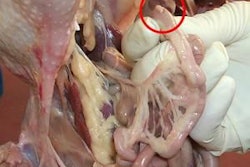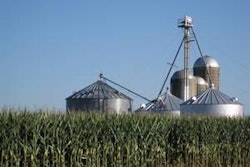
For many in the industry, 2009 does not offer a lot of positives to look back on, with oversupply, falling prices and economic stagnation. 2010, however should be brighter.
According to forecasts from the United States Department of Agriculture’s Foreign Agricultural Service (FAS), this year, broiler meat production will grow by 3 percent and broiler and turkey meat exports are forecast to be 2 and 4 percent higher, respectively.
Chart 1: World broiler meat production recovers
FAS notes that Brazil will continue to be the primary supplier in the international arena, as it focuses on growth to non-traditional markets. For the USA, however, FAS paints a different picture, forecasting that the country will face a decline in its broiler shipments on weak demand from major markets. The USA can, at least, expect a modest increase in its turkey exports.
Production
Global broiler meat production is forecast to increase by 3 percent in 2010 to reach 73.7 million tons. While this increase may be far below that recorded only a few years ago, it is, nevertheless, an improvement on 2009.
This growth is expected to be driven by Brazil and China, which will reach new historic production levels, achieving increases in output of 4 and 3 percent, respectively. The drivers within the two countries will be different, however. In the case of Brazil, the rise will be fuelled by a combination of strong export and domestic demand, while in China, rising living standards will continue to stimulate internal demand.
Chart 2: Major producers: annual production changes (%)
The USA is expected to see total output grow by 2 percent this year. Increases are also predicted for a number of other countries, particularly Argentina, India and Russia.
Exports
The global export market is forecast to grow by 2 percent this year. The combination of plentiful supplies, rising consumption levels and an improving macroeconomic outlook will boost the environment for international trade.
Brazil, the USA and the EU account for some 90 percent of global trade in poultry meat. However, FAS predicts varying outlooks for the three producers over the year ahead.
Chart 3: US and Brazilian exports compared 2005-2010
Brazil’s expanding exports are expected to end the year 6 percent higher to reach a record in excess of 3.3 million tons as the country continues its strategy of targeting non-traditional markets.
US exports, however, are forecast to be 5 percent lower at a little under 2.9 million tons. Increased production in Russia, to substitute imports, and China, to meet growing home consumption, along with lingering non-tariff barriers to trade, are all expected to have a negative impact on the USA’s exports.
The EU, like the USA, will be hampered by restrictive Russian import policies and face continued competition from lower cost countries.
Import demand is expected from a variety of markets in the Middle East and Asia, as well as from efforts to open new markets.
The new importers
The upturn in the global economy that started to emerge in the third quarter of 2009 is expected to stimulate consumption and, consequently, demand for imports will grow. Although Russia, the EU and Japan will remain the largest markets for broiler meat imports, their share of global trade is forecast to stagnate or erode in 2010 as demand increases from other markets.
Chart 4: Broiler meat imports by region 2009-2010
Larger imports are forecast to be led by non-traditional developing markets in the Middle East and Sub-Saharan Africa, which are slowly accounting for a greater portion of world trade. Demand in these markets is rising as a result of population growth, higher incomes, and an upward trend in meat consumption.
Poultry performs particularly well in these markets as it is a lower cost animal protein compared with beef and lamb, and is not associated with any religious taboos.
Turkey
Following a decline in 2009, turkey production is forecast to rebound by 2 percent to almost 5.2 million tons this year. Amongst the greatest increases will be those of Brazil and the US, which are expected to more than make up for the EU’s forecast stagnation in turkey production.
The USA is expected to see production increase by 2 percent to 2.6 million tons, while Brazilian production is forecast to reach 480,000 tons in response to growing home and overseas demand.
Exports of turkey meat are forecast to rise by nearly 4 percent to 551,000 tons, benefiting both the USA and Brazil. Mexican imports are forecast to rise by nearly 12 percent for cuts for processing as the economy recovers from recession.


















